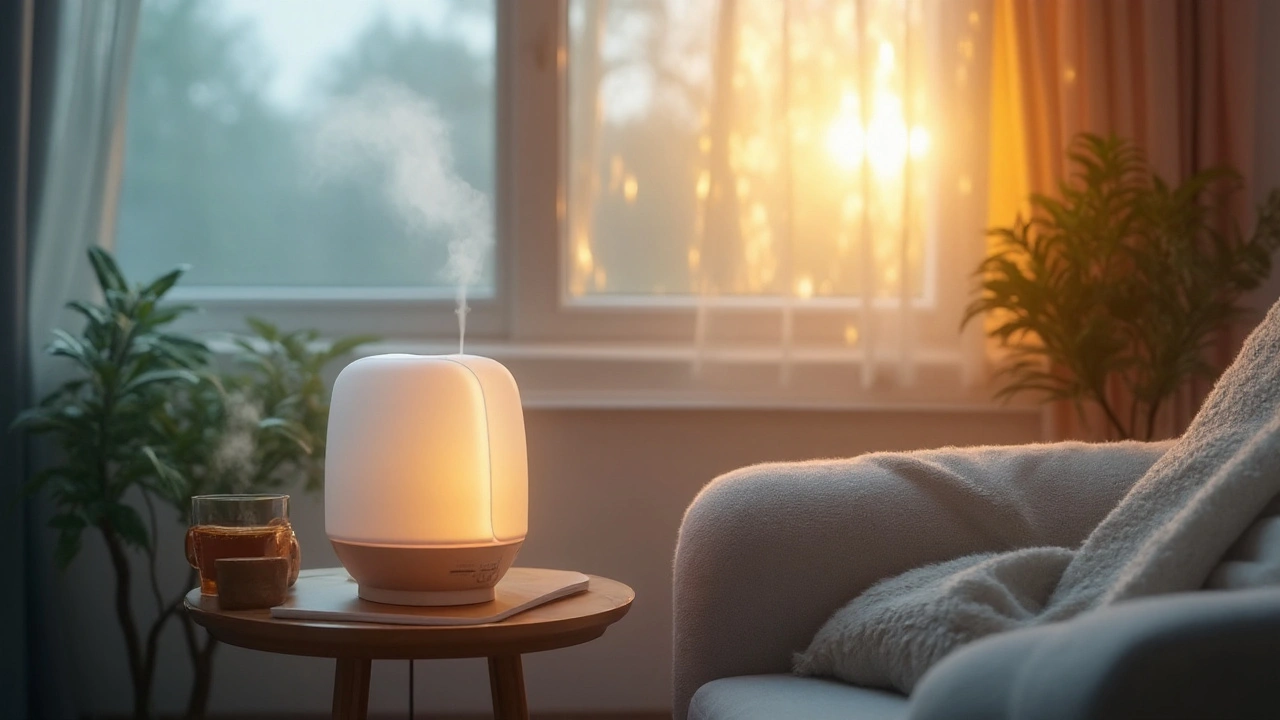Humidifier Guide: Benefits, Types, and How to Choose the Right One
If you’ve felt dry skin, sore throat, or static shocks at home, a humidifier might be the fix you need. Adding a bit of moisture to the air can make your space feel cozier, help your skin stay hydrated, and even make it easier to breathe at night.
Why a Humidifier Can Be Good for You
First off, a humidifier eases dry skin and cracked lips. When the air is too dry, moisture evaporates from your skin faster, leaving it tight and itchy. A steady mist adds back that lost water, so you feel softer after a shower or a night’s sleep.
Second, it can calm respiratory irritation. People with allergies, asthma, or a cold often find their symptoms flare up in dry rooms. Adding humidity helps keep nasal passages moist, which can reduce coughing and congestion.
Third, plants love humidity. If you keep houseplants, a misty environment encourages healthy growth and prevents leaf browning.
Types of Humidifiers and What Sets Them Apart
Cool‑mist ultrasonic models use a vibrating diaphragm to create a fine mist. They’re quiet, cheap, and work well in small to medium rooms. The downside is they can leave a white dust if you use hard water.
Warm‑mist (steam) humidifiers boil water before releasing steam. The heat kills most bacteria, so the mist is cleaner. They’re a bit louder and use more electricity, but they’re great for winter when you want extra warmth.
Evaporative (wick) humidifiers pull air through a saturated wick filter. The air naturally picks up moisture and exits as a gentle mist. They self‑regulate – if the room gets too humid, evaporation slows down. However, the filter needs regular replacement.Hybrid or smart humidifiers combine features like ultrasonic mist with built‑in humidistats, Wi‑Fi control, and auto‑shutdown. They’re convenient but come at a higher price.
When choosing, think about room size, noise tolerance, and how much maintenance you’re willing to do. A 1‑gallon tank usually covers a bedroom for 12‑15 hours, while a larger 3‑gallon unit can handle a living room.
How to Pick the Right Humidifier for Your Home
- Room size – Check the product’s coverage area. If the spec says 300 sq ft, it’s a safe bet for a medium bedroom.
- Noise level – Look for decibel ratings below 30 dB if you’ll use it while sleeping.
- Cleaning ease – Models with detachable tanks and wide openings are quicker to scrub.
- Water type – If you have hard water, choose a model with a demineralization tray or plan to use distilled water.
- Extra features – Humidistats, night lights, timers, and app control can add convenience.
Don’t forget to set the humidity level between 30‑50% — higher than that can promote mold growth. A cheap hygrometer can help you keep an eye on it.
Keeping Your Humidifier Running Smoothly
Empty and refill the water tank daily if you run it often. A quick rinse with white vinegar once a week removes mineral buildup. Rinse the filter (if it has one) according to the manual, usually every 1‑2 weeks.
Place the unit on a flat, water‑resistant surface away from electronics and direct sunlight. This helps avoid accidental spills and keeps the moisture from damaging furniture.
Finally, turn it off when you leave the house for an extended period. This saves energy and prevents the tank from becoming a breeding ground for bacteria.
With the right humidifier, you’ll notice softer skin, easier breathing, and a healthier indoor climate. Pick the type that matches your space, follow basic cleaning steps, and enjoy the added comfort.
Prevent Pharyngeal Mucous Membrane Damage from Environmental Irritants
By Lindsey Smith On 21 Sep, 2025 Comments (8)

Learn practical steps to safeguard your throat's lining from pollutants, dry air, smoke, and other irritants with easy home remedies and lifestyle tweaks.
View More




